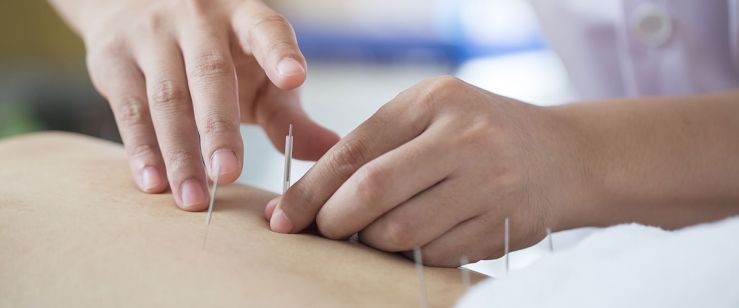An Acupuncturist focuses on the energy that circulates throughout the body along well-defined pathways, known in Eastern cultures as meridians. When obstruction, trauma, or injury presents, the circulation is disrupted causing imbalance, which can result in pain, discomfort, illness and/or mental-emotional disturbances. Acupuncture is a method of Traditional Chinese Medicine (TCM) that produces pain relief or alters the function of a body system through the insertion of fine, fine needles into the skin at strategic points along the meridians or channels through which the energy, or Qi (pronounced “chee”), flows.
Eastern therapy, specifically Acupuncture, is highly effective in treating both acute and chronic pain, and also aids in the healing of neurological and musculoskeletal disorders. When combined with Western therapy, powerful and effective results can be achieved. Sufferers of joint and muscle pain, headaches, osteoarthritis and sciatica, in particular, have high rates of success with Acupuncture treatment.
Tui Na (“twee nah”) is an Eastern therapy, which in Chinese, translates literally as "to push and pull." It is a Traditional Chinese Medicine (TCM) manual therapy designed to address obstruction or disruptions in the meridian channels. These channels often correlate with the connective tissue of the physical body and can be a useful bridge between Eastern and Western styles of treatment.
What to Expect at Your First Visit
• Traditional Chinese Medicine intake
• Tongue and pulse diagnosis
• Orthopedic and neurological exam
• Anatomical & range-of-motion testing
• Acupressure point assessment
Techniques & Treatment
• Use subjective feedback through a TCM Ashi (“ah she”) point assessment. Ashi translates from Chinese literally to "that’s it."
• Discuss an individual treatment plan to achieve the best possible therapeutic outcome for the patient’s specific conditions.
• Address Qi and blood stagnation that may be the cause of the Bi (“bee”) pattern in the meridian or channel. Bi pattern refers to a pattern of pain, disruption or dysfunction.
Adjunctive Therapies
• Authentic TCM Fire Cupping
• Guasha
• Electro-Acupuncture


